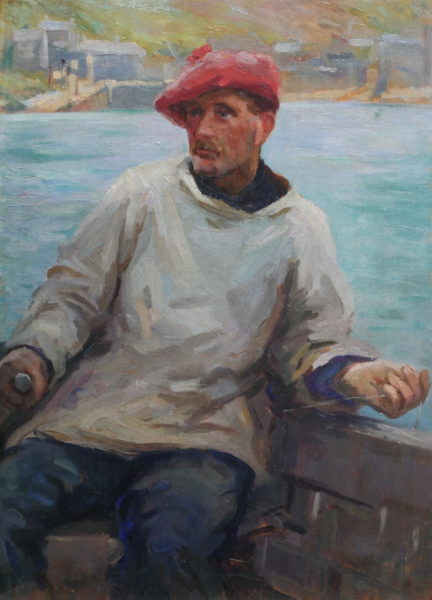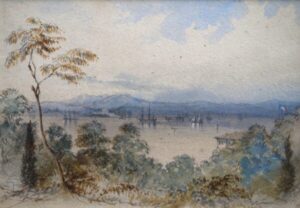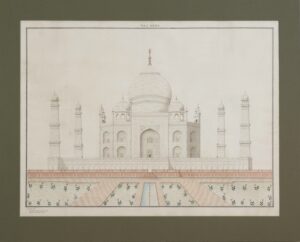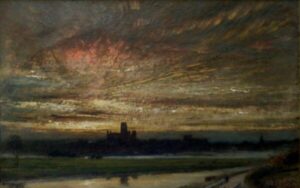Heath, Frank Gascoigne (1873-1936)
Frank Heath was born in Coulsdon, Surrey, the youngest of 12 children. In the 1890s, he enrolled as a student at the South Kensington Schools ( now Royal College of Art), the Academy of Fine Arts in Antwerp and the Herkomer Art School in Bushey.
While a student, Heath became an admirer of the work of Stanhope Forbes and it was this that was to lead him to Newlyn circa 1900. Upon arrival and with the help of Forbes, he found lodgings and a studio nearby at Trewarveneth Farm on the outskirts of Newlyn. ( At that time Forbes and other artists lived and had studios at Trewarveneth.) Over the following years Heath and Forbes became great friends making music together- Forbes on his cello and Heath on his violin. Also Forbes's second wife, Maudie (whom he married after Elizabeth's sad death from cancer in 1912) became godmother to Heath's only son, Tony.
Undoubtedly, Heath's major influence in his early work was Forbes leading him to paint "en plein air" with a subdued palette. This is reflected in paintings such as "Cut Throat Euchre", exhibited at the Royal Academy in 1909 and now is part of the permanent collection at Penlee House. From 1902, he started to exhibit at the Newlyn Art Gallery, the Royal Academy and Walker Art Gallery in Liverpool.
Frank first met his future wife Jessica who was studying at the School of Painting run by Stanhope and Elizabeth Forbes in Newlyn circa 1908. They were married in Paul Church in 1910 then moved to Polperro at the other end of Cornwall. During the 2 years that they lived in the village, their first two children were born, Aileen and Nancy. In 1912, with Jessica's parents still living in Newlyn, they decided to return to the area and purchased 10 acres of land at the top of the Lamorna valley (approx. 3 miles from Newlyn) where they had a house built which they called Menwinnion and this became their family home for the next 24 years. The twins Tony and Gabriel were born in 1915. But why did they choose Lamorna? Around this time a number of artists had settled in the wooded valley leading to the Cove -- with its clear turquoise seas and lush vegetation. These included Lamorna Birch, Laura Knight (who had a studio at the bottom of the Heath's garden) and her husband Harold and Alfred Munnings.
With the coming of the Great War, Frank volunteered, aged 42, for active service. He was badly affected by the war and was invalided out leading to periods of depression and on return to Menwinnion, in the period 1916-1920, he painted very little. However, the 1920s proved to be a happier time for him -- with the 4 children growing up and other friends often calling into Menwinnion to see the family. During this time, his paintings became much brighter and colourful and he became known locally as the sunshine artist.
In the mid 1930s, Frank's health deteriorated due to a combination of chest problems and the after effects of the war, from which he never really recovered. He died peacefully in June 1936 aged 63 and was buried in the family grave at Coulsdon. "The Times" as part of its obituary wrote ".........tall and handsome, he was for many years a popular member of the artistic colony in Newlyn and his most characteristic work was done in the Land's End district. Painting both the figure and landscape he was essentially an open air artist direct in his method with a good sense of values and a fine taste in colour."



